Recently, I found myself face to face with a manatee—with nothing but a little water and a snorkel mask between us! It was an unforgettable moment!
Manatees are marine mammals with large, gray, whale-like bodies. One species within the manatee family, the West Indian manatee (Trichechus manatus latirostris), has a subspecies which is native to Florida and known as the “Florida manatee”. The Florida manatee is believed to have existed in the Sunshine State for millions of years!
I had my close encounter with a Florida manatee in Kings Bay under the careful guidance of the Bird’s Underwater Dive Center team (thank you Michelle and Kip). They’re based in the City of Crystal River, “Home of the Manatee”, and headquarters of the Crystal River National Wildlife Refuge. Crystal River is located on Florida’s Gulf Coast about 80 miles north of Tampa.
“Crystal River is home to the only national wildlife refuge in the United States specifically created to protect habitats for Florida’s beloved official marine mammal, the Florida manatee. … This unique refuge preserves Three Sisters Springs, the last unspoiled and undeveloped spring habitat in Kings Bay.” explains the US Fish and Wildlife Service website.
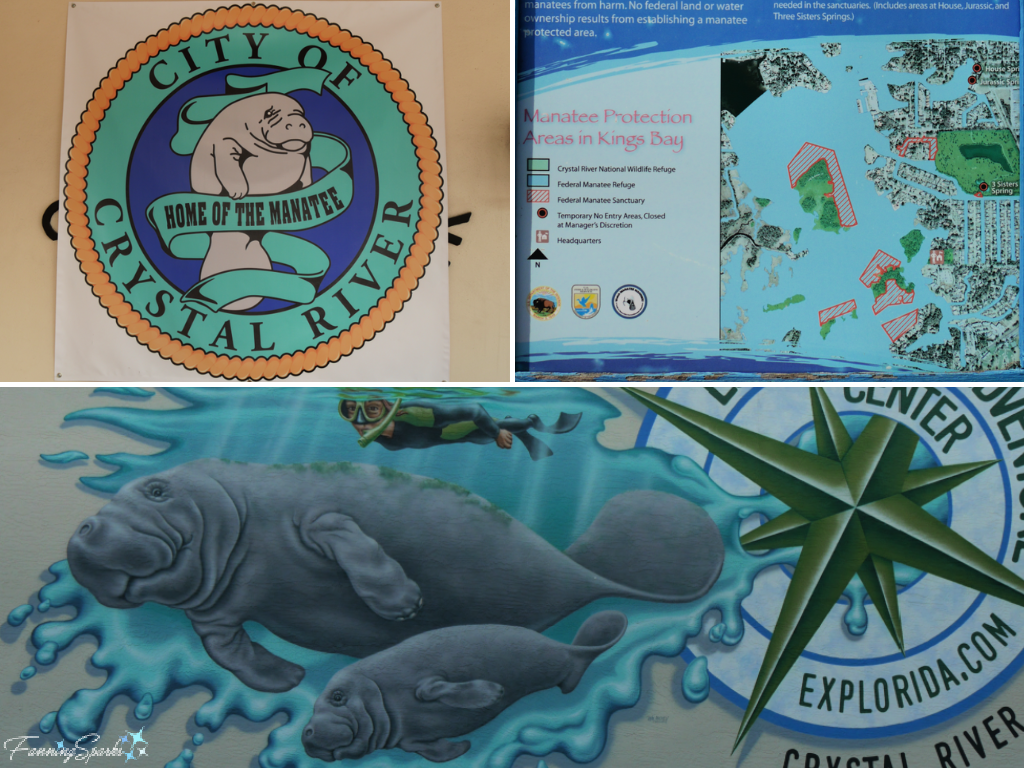
We started our adventure early in the morning, at 6:00 am, before daylight. Marian, my sister and travel companion extraordinaire, and I silently watched the orientation videos after climbing into wet suits. Then our little flock of early birds hopped on the tour boat and headed out into Kings Bay to find manatees. Midway through our quest we stopped to enjoy this spectacular sunrise.
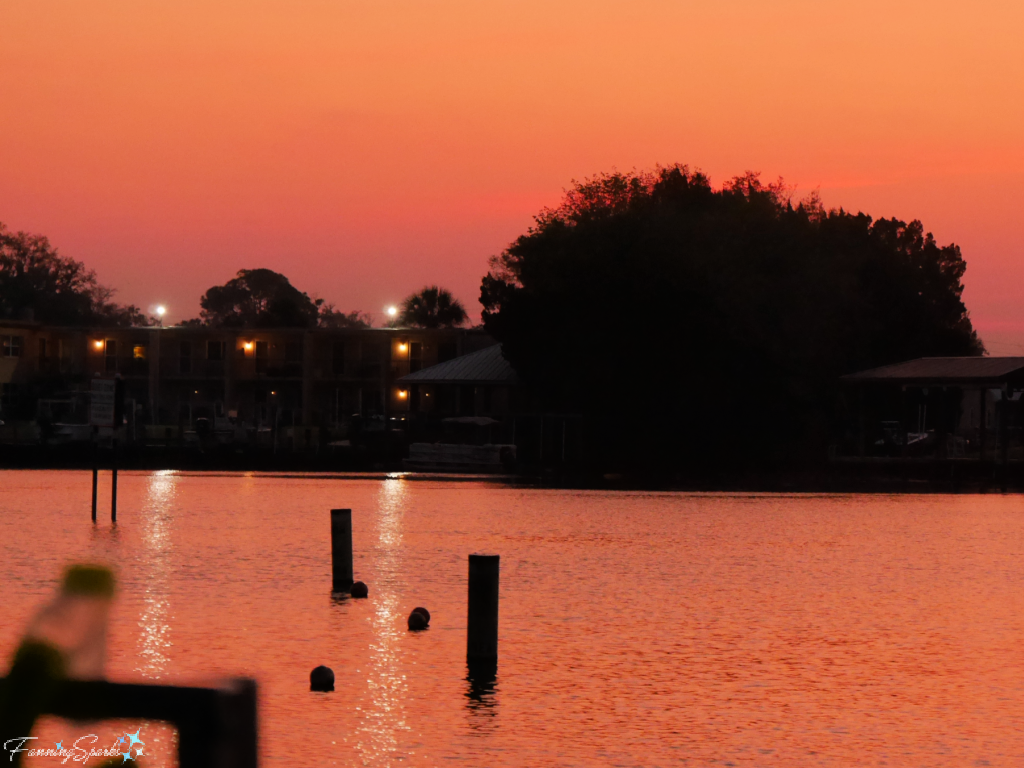
We quickly learned to watch for “manatee footprints” which are flat swirls on the water’s surface indicating a manatee is nearby.
Manatees must come to the surface to breathe. On average, they breathe every three to five minutes but the frequency varies based on their level of activity—they may breathe as often as every 30 seconds when very active or as infrequently as every 20 minutes when resting. It’s a little difficult to discern in the below photo, but the smooth patch of water in front of the dock is a manatee footprint.
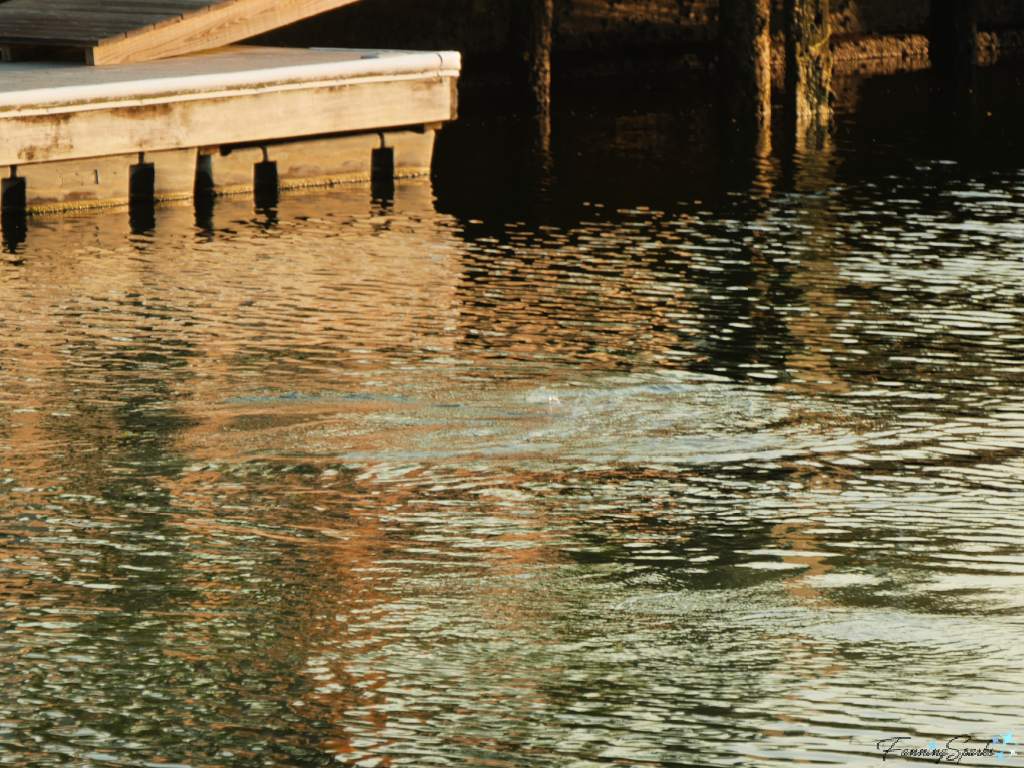
Once we found the manatee, it was time to get in the water. We took great care to enter the water quietly and smoothly from the bottom rung of the ladder. We rested on pool noodles to float calmly near the water’s surface keeping our legs horizontal and as still as possible. We used only our hands, with small, dog paddle-like strokes, to minimize our movements and avoid disturbing the water. These measures are all part of passive observation. “That means, look, but don’t touch. Manatees might look cuddly, but resist giving them a hug. Touching, disturbing, or otherwise harassing these protected creatures can get you a citation. Practice good manatee manners and chill with them in the warm waters of the springs.” explains the Discover Crystal River Florida website.
Manatees are very sensitive to sound—something as quiet as a person’s breathe or a camera’s click can disturb them. Fortunately, the manatee we’d spotted was busy eating and unperturbed by our curious stares.
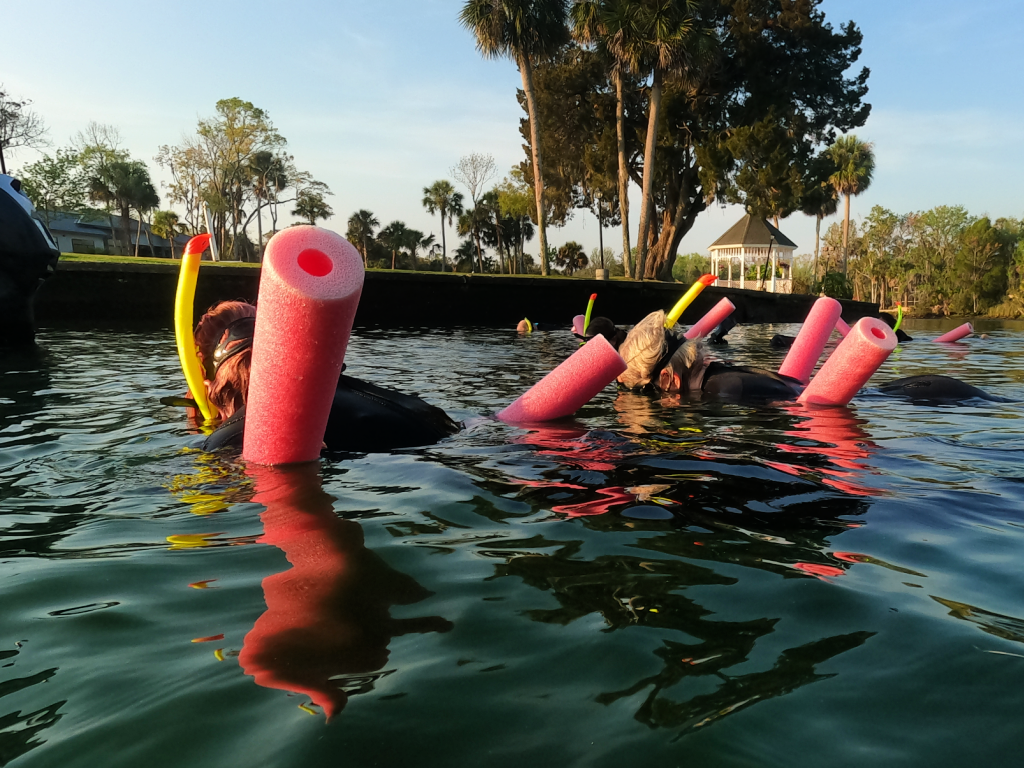
Manatees are herbivores and eat primarily seagrass. “This all-grass diet limits where they can live. Manatees do not eat seaweed, kelp, or other deep-water plants because these are not grass but a form of algae. All grasses require sunlight, which can reach only about 15 feet below the surface. So manatees never leave the shallow waters close to shore.” explains author Kathy Darling in her book Manatee. She goes on to explain “Manatees have well-developed taste buds and equally strong food preferences. Near the Crystal River there is a patch of water lilies. The manatees eat all the plants around this patch and never touch the lilies, although they are edible. The canals of southern Florida are choked with water hyacinths. It was hoped that manatees would help control them. Unfortunately, manatees don’t like water hyacinths any more than water lilies.”
Not only are manatees particular about their diet, they also have huge appetites. “The average adult manatee is about three meters (9.8 feet) long and weighs between 362–544 kilograms (800–1,200 pounds). … [They] can consume about 10–15% of their body weight in vegetation daily.” states the Save the Manatee Club in their Manatees: An Educator’s Guide.
Efforts are underway to restore healthy beds of seagrass in Kings Bay. Newly replanted seagrass is protected with heavy metal grate covers so it can establish itself. Understandably, manatees are attracted to these plantings and are often found grazing in these areas. Manatees have even been seen lifting the covers to eat the seagrass underneath!
We learned to watch for small air bubbles to follow the manatee’s movement through the grasses on the canal bottom. We also learned to avoid the large air bubbles because, apparently, flatulence is common in manatees! As we became more familiar with our surroundings, we were able to spot a manatee in the murky waters.
This is the only photo I was able to get with my waterproof camera.
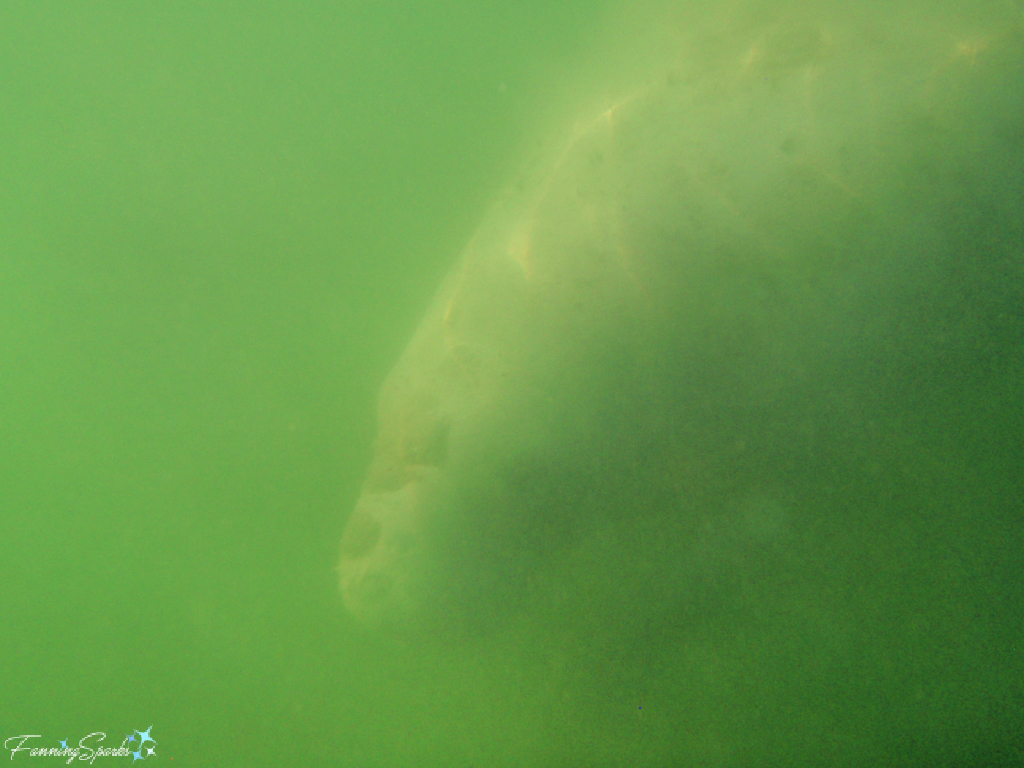
Luckily, our guide (thank you Michelle) got better shots. It was thrilling to float above this gentle giant while it grazed seagrass along the bottom—a behavior which has earned the manatee the nickname of “sea cow”.
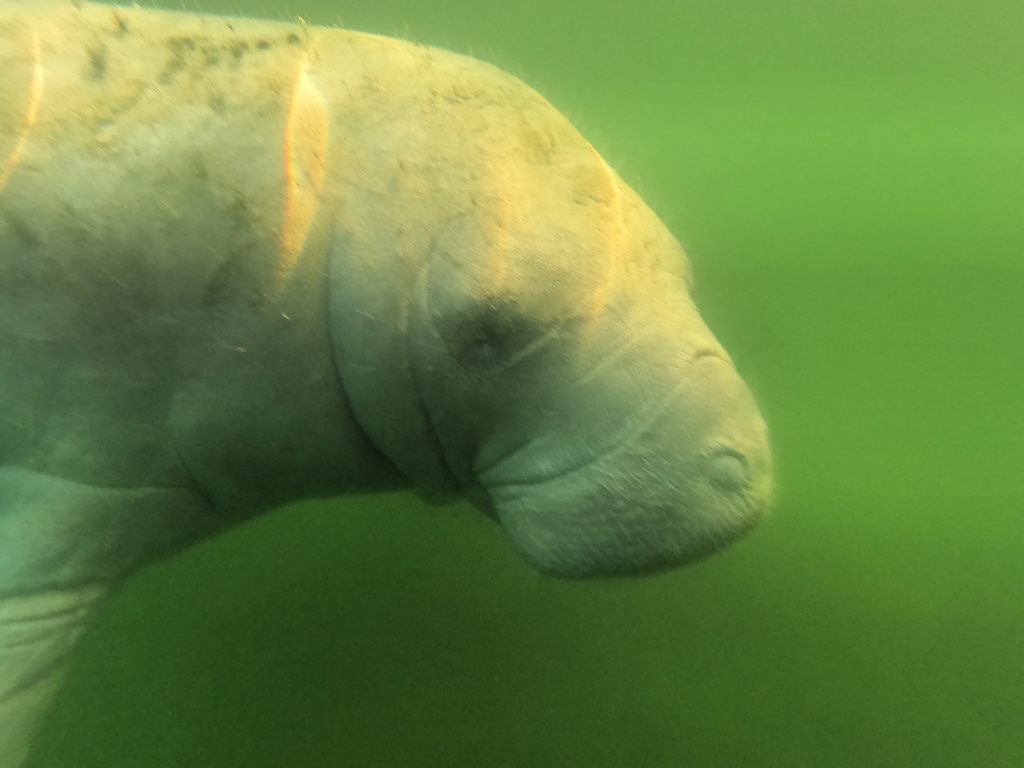
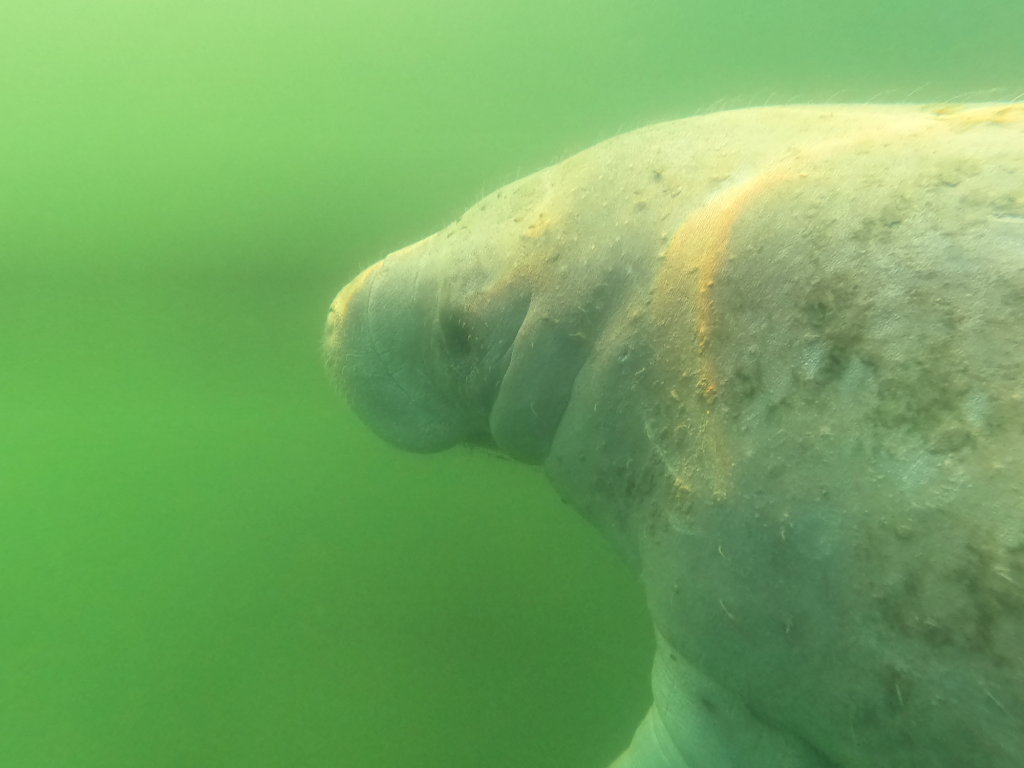
But the biggest thrill of all came when the manatee surfaced for air RIGHT IN FRONT OF ME! Imagine being within an arm’s length of this face! Holy Sea Cow!

Although I had been watching the manatee, I was a little startled to see it so close. The manatee, however, couldn’t have cared less that I was there. Author Kathy Darling wrote “It doesn’t take long to learn that manatees mean people no harm. Federal law forbids chasing or even touching manatees. But some of the manatees touched us. They seem to like people and it is impossible not to like them back.”
Sadly, people are also the biggest reason why West Indian manatees are classified as an endangered species meaning they are very likely to become extinct in their known native ranges in the near future.
“Many manatee mortalities are human-related. Most human-related manatee mortalities in Florida are caused by watercraft collisions. Manatees are also crushed and/or drowned in canal locks and flood control structures. They can accidentally ingest fishhooks, litter, and fishing line, or become entangled in crab trap lines. Manatees can also die from natural causes such as cold-related disease, gastrointestinal disease, and pneumonia.” explains the Save the Manatee Club in their Manatees: An Educator’s Guide.
After swimming with the manatees, we had an opportunity to learn more about the plight of the manatee at the Ellie Schiller Homosassa Springs Wildlife State Park. I thought their mailbox was perfect!

There we attended a manatee informational session conducted by park ranger Sue. She explained the facility is considered a second-tier care center (vs a first-tier critical care facility) with the aim to rehabilitate manatees so they can once again survive on their own in the wild. There were five manatees in residence when we visited including a pair of orphaned calves and two boat strike victims.
The manatees are fed romaine and escarole lettuce along with some supplementary grasses four times daily. Watching the 1:30pm feeding was highly entertaining!
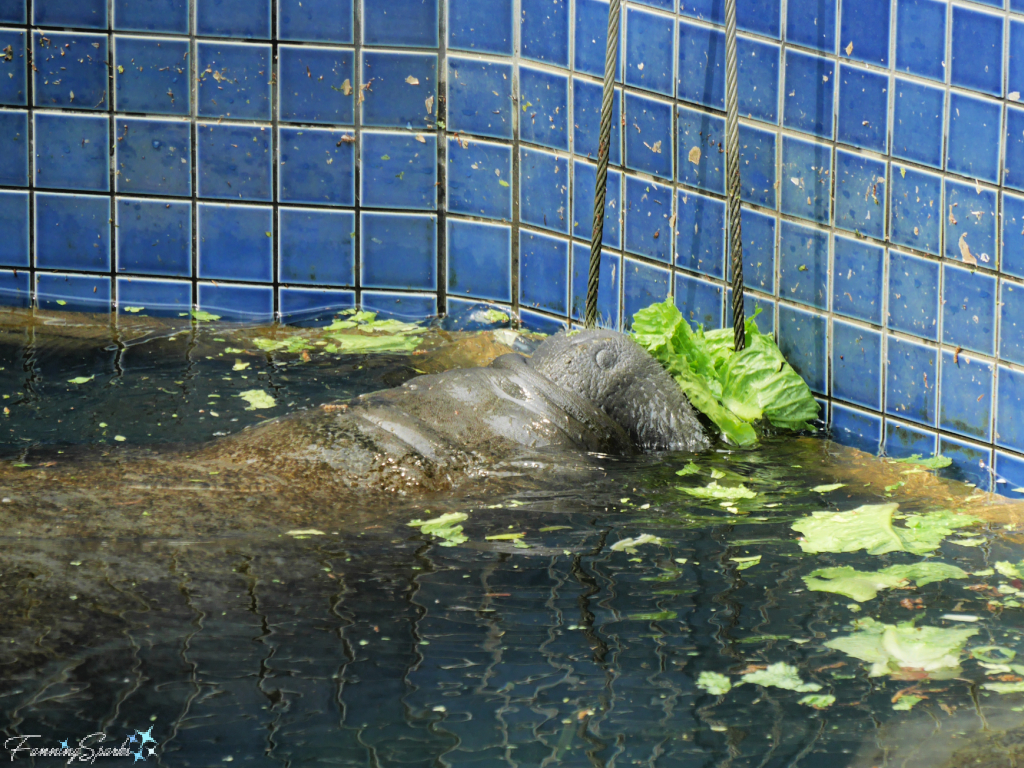
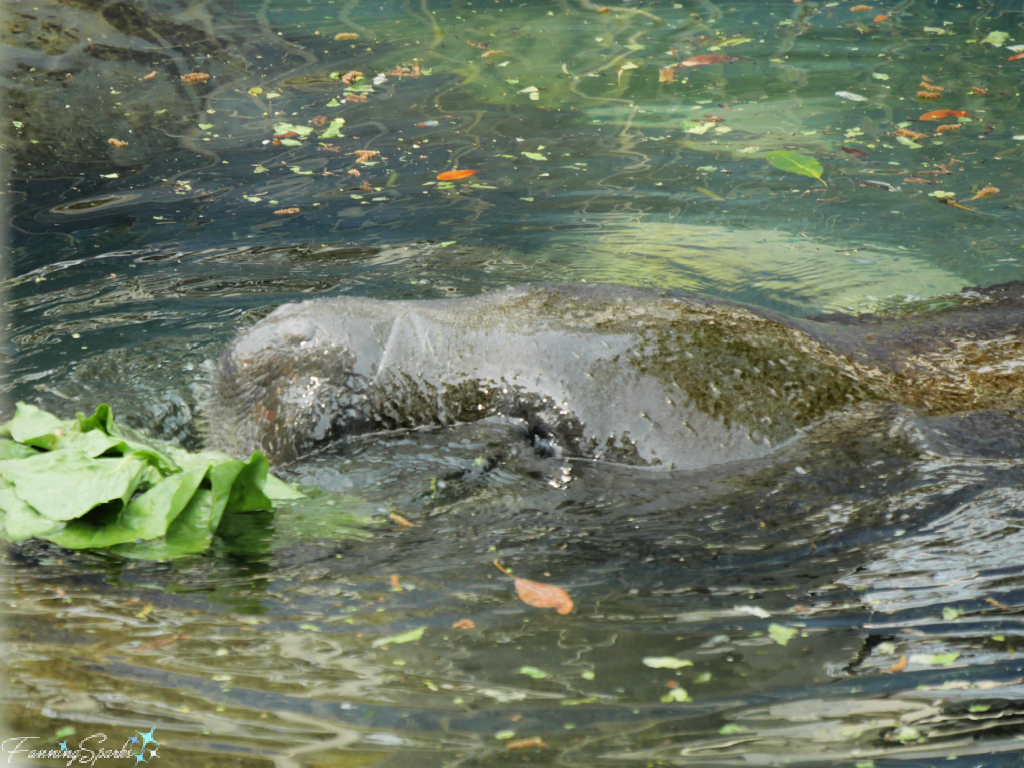
Incidentally, wildlife officials also fed lettuce—20,000 pounds a week!—to manatees on Florida’s east coast last year. According to a February 2022 CNN article, the temporary feeding program was put in place because manatees were “dying at an alarming rate, largely from starvation”.
“For years, there have been concerns about declining water quality in the [Indian River] Lagoon, caused by a number of factors including development, septic systems, storm water runoff and warming temperatures from climate change. … Those problems culminated in 2011 when an algae super bloom covered more than 130-thousand acres of the lagoon’s water, blocking the sunlight and causing a massive die-off of seagrass.” explains a June 2021 NPR article. Given manatees rely on seagrass as their primary food source, the cause and effect of this dire situation are apparent.
Fortunately, a number of organizations and agencies are actively working to address these issues. For instance, the Save the Manatee Club, a nonprofit organization founded in 1981 by former Florida Governor Bob Graham and singer and songwriter Jimmy Buffett, has a mission “to protect imperiled manatees and their aquatic habitat for future generations. … Today, Save the Manatee Club is the world’s leading manatee conservation organization”. reports their website.
Once again, Mother Nature reminds us of the crucial dependencies in her beautiful, complex, interconnected world—to protect the manatees, we must preserve the essential elements of food, water, space and shelter in their habitat.
More Info
For a comprehensive summary of the Algae Blooms, Seagrass Loss, and Manatee Deaths situation, including what we can do to help, check out the Save The Manatee Club website.
The following articles regarding this situation are quoted in this blog post:
. Florida Wildlife Officials are Distributing 3,000 Pounds of Lettuce a Day to Save Starving Manatees, February 2022 CNN Article
. As Seagrass Habitats Decline, Florida Manatees Are Dying of Starvation, June 2021 NPR Article.
We chose Bird’s Underwater Dive Center for our manatee adventure. They offer a number of water-based excursions, including Manatee Swim Tours, in the Crystal River area of Florida. We thoroughly enjoyed our tour—the reservation process was simple and straightforward; logistics were well-organized; wet suits and snorkeling gear was in good condition; Captain Kip, Guide Michelle and other staff were personable, courteous and attentive; and, most importantly, great care was taken to ensure we understood passive observation and practiced good manatee manners.
To learn how to behave around manatees, watch the video Crystal River Refuge’s “Manatee Manners” for Swimmers or check out Florida Fish and Wildlife Conservation Commission – Living with Florida Manatees.
Information about the Crystal River National Wildlife Refuge can be found on the U.S. Fish & Wildlife Service website or the Discover Crystal River Florida website. Information about the Ellie Schiller Homosassa Springs Wildlife State Park can be found on the Florida State Parks website.
The book, Manatee by Kathy Darling, describes the “life history, physical characteristics, behavior, and underwater activities of the Florida manatee and how scientists and others are trying to save this endangered sea mammal”. For two years, the author and her daughter, studied and photographed the manatees of Crystal River for this book. You can find Manatee by Kathy Darling on Archive.org.
The Save the Manatee Club website, including their resources for educators, is also packed with information about manatees.
Today’s Takeaways
1. Manatees are marine mammals with large, gray, whale-like bodies.
2. Manatees are protected by law—”touching, disturbing, or otherwise harassing these protected creatures can get you a citation.”
3. Consider what you can do to help protect imperiled manatees and their aquatic habitat.


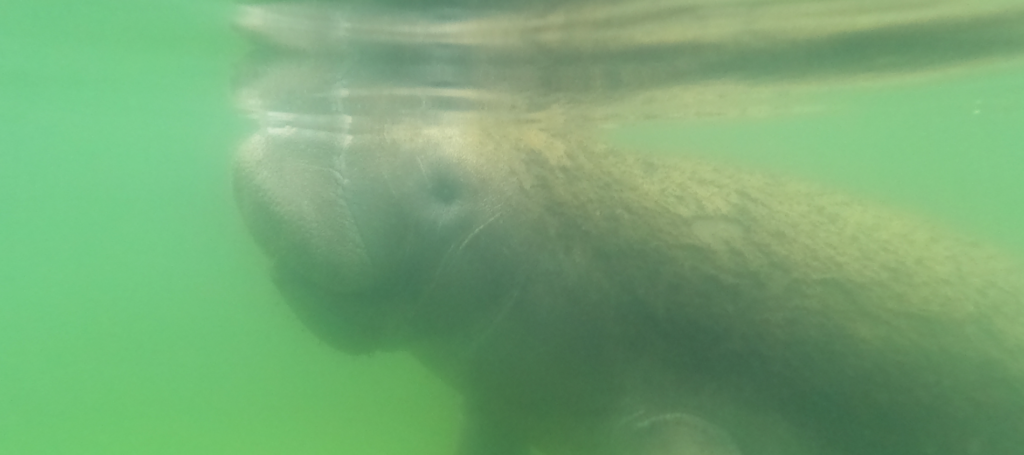


Comments are closed.